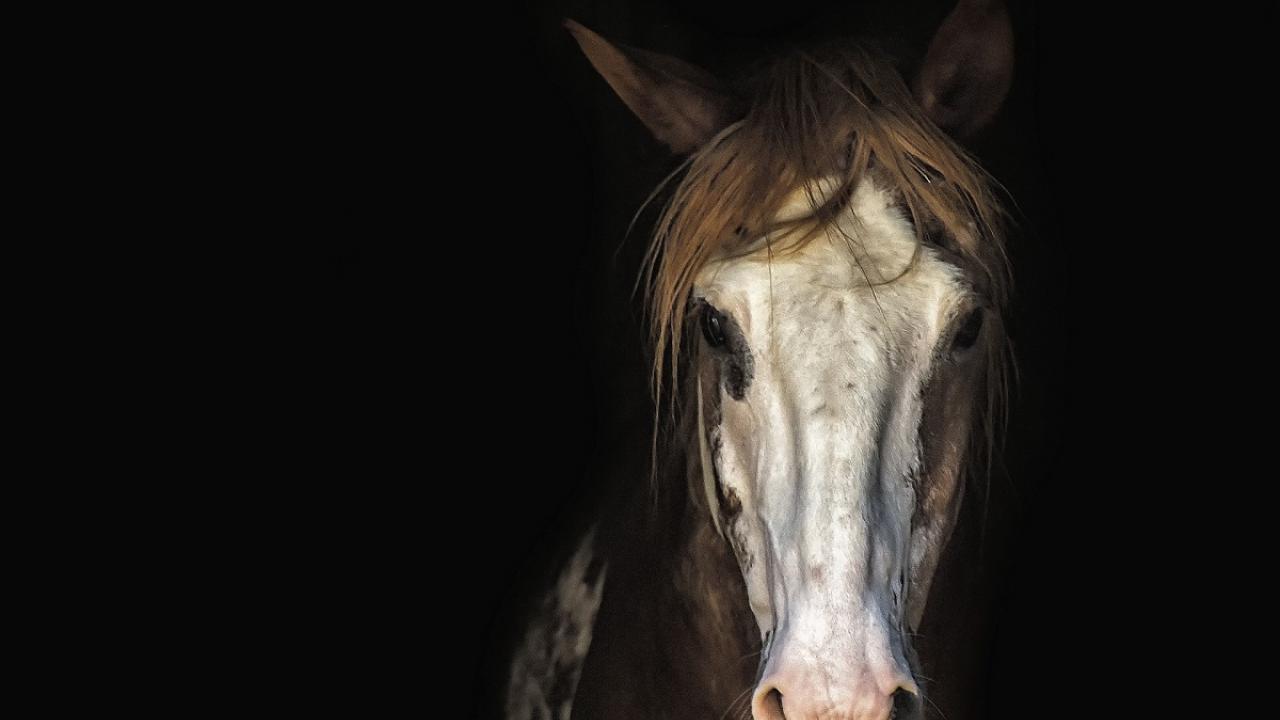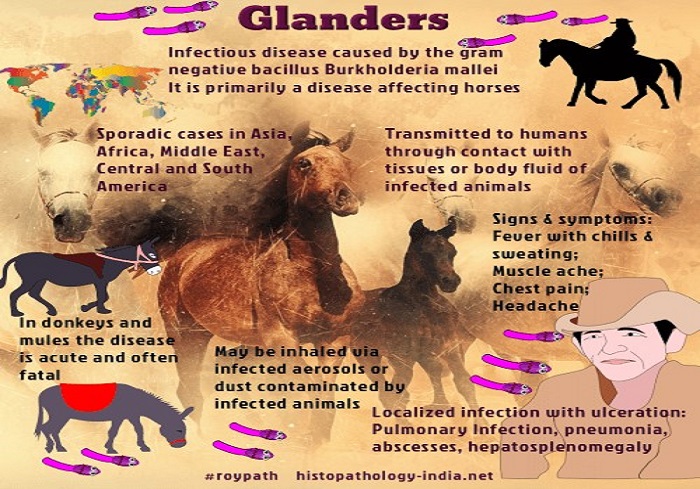


Glanders is an infectious and life-threatening disease that mainly affects horses, donkeys, or mules caused by the bacterium Burkholderia mallei. Glanders can be transmitted to humans. Susceptibility to glanders has also been demonstrated in camels, felines living in the wild, bears, wolves, and dogs. Carnivores may become infected by eating infected meat. Guinea pigs and hamsters are highly susceptible. The disease causes nodules and ulcerations in the respiratory tract and lungs in animals. A skin form, known as ‘farcy’, also occurs. In humans, the disease can take different forms such as nasal, localized with nodules and abscesses, pulmonary, and septicemia with disseminated or chronic infection, respectively. A cure is possible, however, if cases are treated rapidly with antibiotics; fatality rates for untreated infections are very high. The disease has been eradicated in North America, Australia, and Europe through testing and then eliminating any infected animals, coupled with import control measures. However, glanders remains sporadically reported in a number of Asian, African, Middle Eastern, and South American countries. Glanders is a disease listed in the WOAH Terrestrial Animal Health Code and must be reported by Members according to the WOAH Code.

